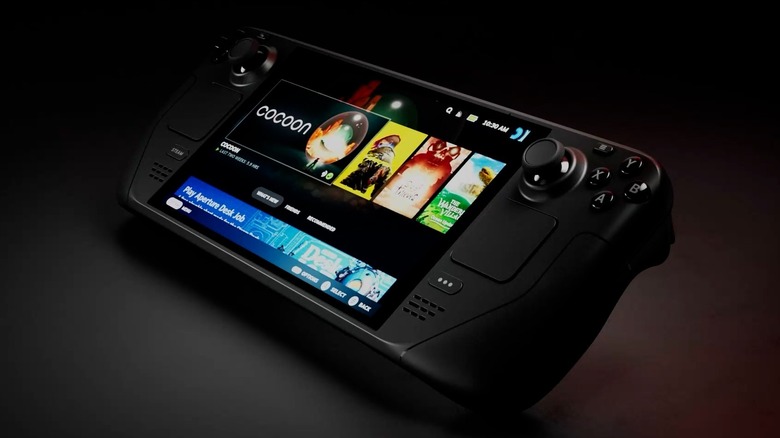You Don't Need A Dock To Stream Your Steam Deck To Your TV
The Steam Deck's miniature build is perfect for travel, but it may not match the console-level experience players look for at home. That's why you'd be tempted to stream your games over to the big screen. The usual method for this is using a dock, though that requires wires. But there's a hack that lets you ditch those entirely. It involves a wireless streaming host called Sunshine and a client app called Moonlight. Here's how you can get started:
- First, you'll need your Deck's local IP. Boot into desktop mode, click the Wi-Fi icon, and dig into the details menu until you spot the "IPv4 Address." Keep that number handy.
- Head to the Discover app.
- Use the search bar (on the top-left) to find "Sunshine" and install the app.
- Find Sunshine in your "Multimedia" applications and run it. Your browser will pop up with a setup page asking you to lock it down with a new username and password.
- Move over to your big screen. Open its app store and grab the client app called "Moonlight". It's easily available on TVs running Google TV/Android TV and on the Apple TV box.
- Fire up Moonlight. The most direct way to connect is to tap the plus symbol for a manual connection and punch in the Deck's IP address from step one. Do keep in mind that your router might assign your Deck a new IP address every few days.
- You should see your Deck's display pop up on the TV.
If the stream is choppy, don't be afraid to poke around in the Sunshine settings back on your Deck. It's also worth double-checking a few common mistakes Steam Deck users make that can hurt performance.
Other ways to go big screen
Enthusiasts swear by the Sunshine/Moonlight setup. The common alternative, Steam Link, is easier to use, but it's known to be laggy. Meanwhile, Sunshine/Moonlight is praised for its low latency. It can even achieve 4K 120 FPS streaming, and that too, with HDR. On top of that, it lets you stream your entire desktop, not just games. That said, all those steps to be followed for setup and customization features mean that this is more of an enthusiast's setup. So it's okay if you don't dig it. As an alternative, you could try to find a pair of wireless HDMI dongles to just beam the video signal directly.
But Steam Link does offer one huge advantage: ease of setup. Getting started is far less convoluted. You just launch the app on your TV, connect it to your Wi-Fi, and sign in to your Steam account. Then make sure your Deck is powered on and on the same Wi-Fi network. The app will show you a PIN, which you have to enter on your Steam Deck. This will pair the devices.
Still, while ditching wires is neat, you'll always face some latency without them. If you want to get rid of that completely, you'll have to use an adapter to connect to a TV. This will have to be the USB-C to HDMI kind, since the Steam Deck lacks a built-in HDMI port. Once you start playing, you will quickly notice that the gameplay is almost completely latency-free. Just one drawback: an adapter won't let you charge the Deck while you play. That's why you'll want to use a good powered USB-C dock with it.

